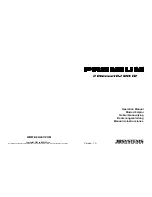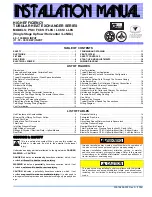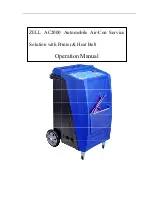
Operating and Maintenance Instructions –
85
This section of the manual describes how to enter parameters, using the user interface, to
conduct analysis. For information on how the SWS program conducts its analysis, see the
How
the SWS Calculates Values
section.
Select channels for which analysis is to be performed by highlighting the channel from the list of
available channels.
Select the engineering units by using the radio buttons in the top left of the Analysis Setup dialog
box.
Define the parameters by entering the appropriate values in the following fields:
•
Start Wavelength (mandatory)—This value is the lower bound of the wavelength range over
which analysis is conducted. For C-band, the value must be greater than 1520 nm. For L-
band, the value must be greater than 1541 nm.
•
Stop Wavelength (mandatory)—This value is the upper bound of the wavelength range over
which analysis is conducted. For C-band, the value must be less than 1570 nm. For L-band,
the value must be less than 1630 nm.
•
MinPower and MaxPower (optional, but recommended)—These values are calculated each
time by the SWS program, but the user has the option to include these values in the analysis
table.
•
Bandwidth/Center Wavelength (normally optional, but mandatory for calculating flatness)—
When this field is checked, the user must enter parameters to define how the calculations
are performed:
•
Ref Peak—Select whether bandwidth and center wavelength are to be measured with
respect to maximum peak or minimum peak.
•
Relative To—This section consists of two parameters. In the first parameter, the user
selects whether the measure is to be taken with respect to the peak or to the base of the
trace. The second parameter, threshold, defines the magnitude measured with respect
to the peak or the base, depending on the selection of the first parameter. Threshold is
expressed in dB or linear units, ranging between 0 and 1.
See the
How the SWS Calculates Values
section for other examples of measuring bandwidth
and center wavelength.
In the advanced section of the Analysis Setup dialog box, the SWS program is set to evaluate
the passband, flatness, crosstalk, and cumulative crosstalk characteristics of the channel.
To set the SWS:
1. Define whether the primary channel is determined by making the measurement with respect
to the center wavelength or to the nearest channel to the center wavelength. See the
Selecting the ITU Grid or Specifying Channels
section for more information.
Artisan Technology Group - Quality Instrumentation ... Guaranteed | (888) 88-SOURCE | www.artisantg.com
















































